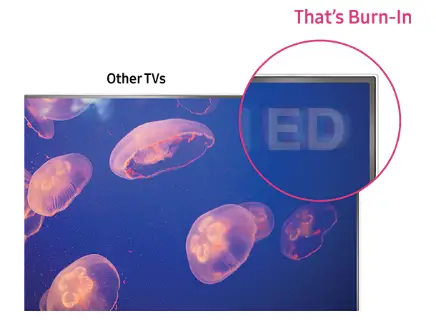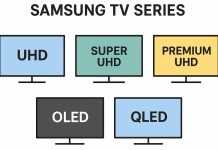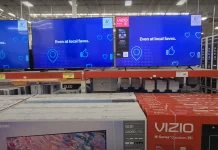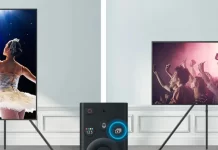Modern Quantum Dot TVs are free from the screen burn-in issues that previously affected technologies like plasma panels. In the past, the problem stemmed from the instability of materials used in displays, which could alter their properties over time and degrade image quality. Today, this issue has been resolved with advancements in LED display technology.
What is screen burn-in?
Screen burn-in is a permanent defect that appears in areas of the display where static images have been shown for extended periods. In plasma panels, this issue was caused by changes in the properties of the gas filling the pixels. In modern OLED displays, burn-in occurs due to the organic materials used, which lose brightness over time.
Burn-in in LED and Quantum Dot displays
Early versions of Quantum Dot displays, despite their exceptional brightness and color accuracy, faced criticism for the instability of their liquid crystals. Pixels could become stuck in either an open or closed state. Over time, manufacturers like Samsung significantly improved the technology, enhancing the durability of LED displays.
Samsung’s no-burn-in guarantee
Samsung capitalized on the burn-in resistance of LED displays by introducing a protection program in 2016. The company offered free repair or replacement of 2016 SUHD TVs in cases of screen burn-in. This warranty covered defects occurring under normal use, provided photo evidence was submitted and the product was registered on the official website. However, Samsung faced minimal risk, as only a small number of TVs with defective pixels were likely to qualify for this guarantee.






